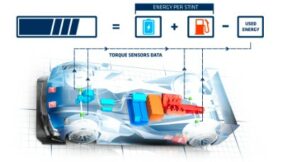Exploring the Differences Between Track Asphalt and Regular Asphalt
Track asphalt and regular asphalt are two common materials used in road construction and paving projects. While both materials share similarities, they also have distinct characteristics and applications. In this comprehensive guide, we’ll explore the differences between track asphalt and regular asphalt, their unique properties, and the factors to consider when choosing the right material for your paving needs.

Track Asphalt: The Basics
Track asphalt, also known as racetrack asphalt or racing asphalt, is a specialized type of asphalt designed for high-performance racing surfaces. It is commonly used in motorsports venues such as race tracks, karting circuits, and drag strips, where superior traction, durability, and safety are essential.
Properties of Track Asphalt
- High Grip Surface: Track asphalt provides maximum grip and traction, allowing vehicles to maintain control at high speeds and during aggressive maneuvers.
- Smooth Texture: Track asphalt features a smooth surface texture that minimizes tire wear and reduces rolling resistance, optimizing performance and fuel efficiency.
- Resistance to Heat and Abrasion: Track asphalt withstands extreme temperatures, heavy loads, and repetitive friction, ensuring long-lasting durability and performance.
Regular Asphalt: The Basics
Regular asphalt, also known as conventional asphalt or hot mix asphalt (HMA), is the most common type of asphalt used in road construction and paving projects. It is composed of aggregate materials (such as gravel, sand, and stone) bound together with a petroleum-based binder (asphalt cement).
Properties of Regular Asphalt
- Versatility: Regular asphalt is highly versatile and used in roads, highways, parking lots, driveways, and sidewalks.
- Cost-Effectiveness: Regular asphalt is a cost-effective paving solution, offering a balance of performance, durability, and affordability for various infrastructure projects.
- Ease of Installation: Regular asphalt mixes easily, transported, and laid using standard paving equipment and techniques, making it a popular choice for construction contractors and paving professionals.
Key Differences Between Track Asphalt and Regular Asphalt
While track asphalt and regular asphalt share some similarities, they also have several key differences that set them apart in terms of composition, performance, and application.
Composition
- Aggregate Size and Gradation: Track asphalt uses finer aggregate materials with a uniform particle size distribution to achieve a smoother surface texture and superior grip. Regular asphalt may incorporate a wider range of aggregate sizes to meet specific performance requirements and load-bearing capacity.
- Binder Content and Composition: Track asphalt may contain specialized polymer additives or modifiers to enhance grip, reduce tire wear, and improve resistance to heat and abrasion. Regular asphalt relies primarily on asphalt cement (bitumen) as the binder, with optional additives for improved durability and performance.
Performance
- Traction and Grip: Tarmac provides maximum traction and grip, especially in high-speed racing environments where vehicle control is critical. Regular asphalt may offer adequate traction for everyday driving conditions but may not meet the rigorous demands of racing surfaces.
- Durability and Wear Resistance: Track asphalt is designed to withstand heavy loads, repetitive friction, and extreme temperatures without deteriorating or losing its grip. Regular asphalt is durable and long-lasting but may require regular maintenance to repair cracks, potholes, and other signs of wear and tear.
Application
Specialized vs. General Use:
Track asphalt is specifically formulated for use in motorsports venues and racing circuits, where performance and safety are paramount. Regular asphalt is suitable for a wide range of applications, including roads, highways, parking lots, and residential driveways.
Surface Texture and Smoothness:
Track asphalt features a smooth surface texture that minimizes tire wear and provides consistent grip across the entire racing surface. Regular asphalt may have a coarser texture and rougher surface finish, depending on the application and desired performance characteristics.
Factors to Consider When Choosing Asphalt Materials
When selecting asphalt materials for a paving project, several factors should be considered to ensure optimal performance, longevity, and cost-effectiveness.
Project Requirements
- Traffic Volume and Load Bearing Capacity: Consider the anticipated traffic volume, vehicle types, and load-bearing requirements of the pavement to determine the appropriate asphalt mix design and thickness.
- Climate and Environmental Conditions: Take into account the local climate, temperature fluctuations, precipitation levels, and environmental factors that may impact the durability and performance of the asphalt pavement.
Performance Specifications
- Skid Resistance and Safety: Evaluate the skid resistance and safety requirements of the pavement, especially for high-traffic areas, intersections, and curves where traction is critical for vehicle control.
- Durability and Longevity: Assess the expected service life and durability of the pavement based on factors such as traffic volume, environmental conditions, and maintenance schedules.
Budget and Cost Considerations
- Initial Cost vs. Life Cycle Cost: Compare the initial cost of asphalt materials and construction to the long-term life cycle cost, including maintenance, repair, and rehabilitation expenses over the pavement’s service life.
Contractor Experience and Expertise
- Qualifications and References: Select a reputable paving contractor with experience and expertise in asphalt pavement design, construction, and maintenance to ensure quality workmanship and satisfactory outcomes.
Conclusion
In conclusion, track tarmac and regular normal are two distinct materials. With applications in road construction and paving projects. Each with its own unique properties, performance characteristics, and applications. Track asphalt is for high-performance racing surfaces. Regular asphalt is suitable for a wide range of infrastructure projects. This includes roads, highways, parking lots, and driveways. Understanding the differences between these materials and considering factors. Factors such as project requirements, performance specifications, budget, and contractor expertise. Through this, stakeholders can make informed decisions when choosing the right asphalt materials for their paving needs. Whether it’s maximizing traction on a racetrack or ensuring durability on a residential street. Selecting the appropriate asphalt materials is essential for achieving safe, sustainable, and cost-effective pavement solutions.





